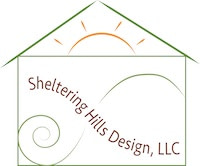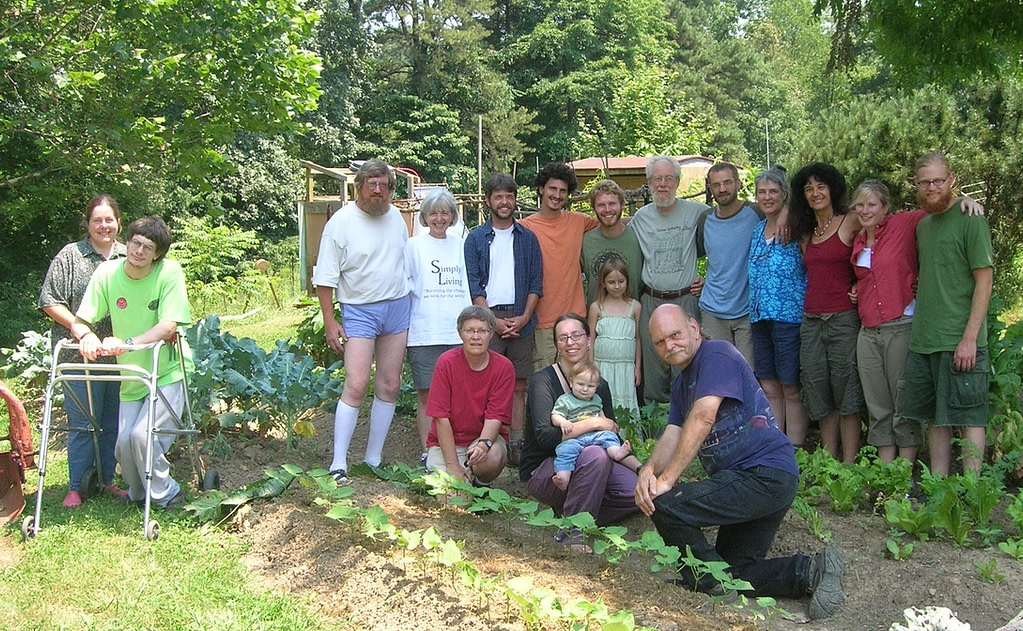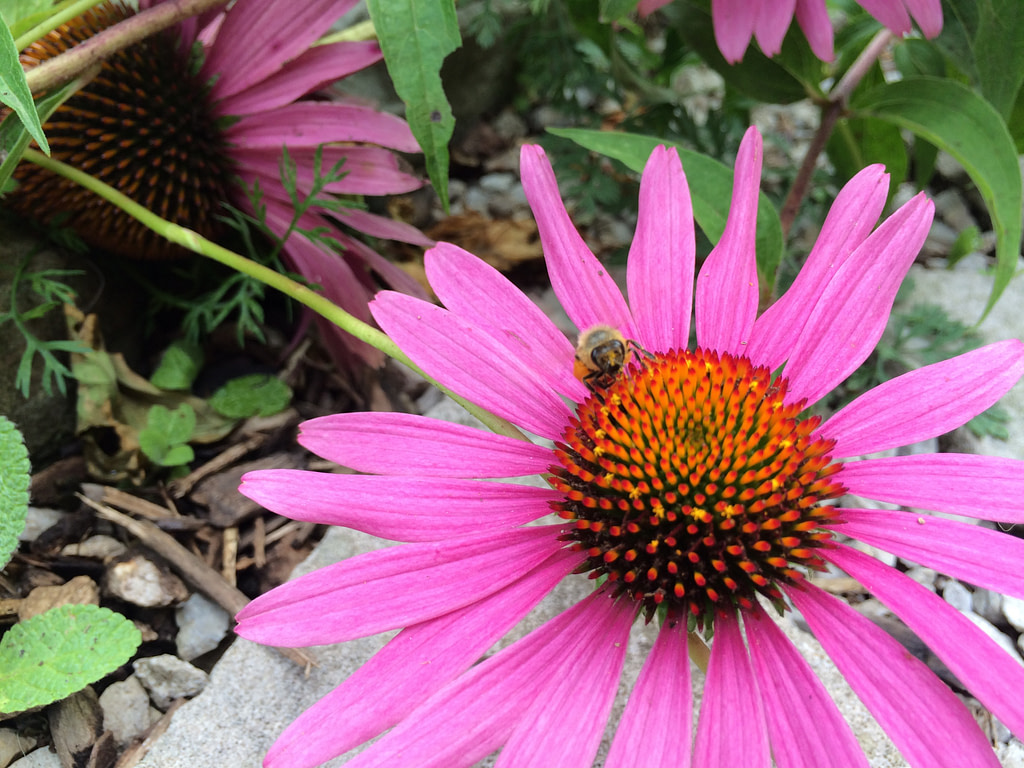Returning to Permaculture: Starting from the Ground Up
When COVID-19 reshaped our world in 2020, I found myself stepping back from the permaculture organizing and design work that had been central to my life. What began as a necessary pause became something more profound—a time of reflection, healing, and ultimately, transformation.
The Stepping Back
The decision to step away wasn't simple or singular. COVID created immediate practical barriers to the hands-on, community-centered work that permaculture thrives on. In the weeks before the shut-down, I had been slated to return to Belize to teach at MMRF, but had the intuition to cancel. (That's another story). If I'm honest, the pandemic also gave me permission to acknowledge something I'd been noticing for a while: patterns in permaculture spaces that didn't quite add up.
My own health and personal struggles during this period brought things into sharper focus. While I was learning to listen to my body's limits, to recognize rest as essential rather than optional, and to understand healing as its own kind of work, I was also noticing contradictions around me. People talking about "care of people" while running themselves into the ground or maintaining an extractive mindset. Abundance mindsets that seemed to mask deeper anxieties. Claims of sustainability from those whose personal practices and relationships seemed to contradict our ethics and principles.
I needed space to sort through what was working from what wasn't—both in the movement and in my own approach.

What the Pause Taught Me
Stepping back from permaculture organizing didn't mean stepping back from learning. In fact, this period became unexpectedly rich with insight as I found myself deep in other work that would profoundly shape how I understood community, decision-making, and the transformative work of regenerative culture.
My role as executive director at Sociocracy for All opened up entirely new territory. Working with dynamic governance and sociocratic principles, I was learning how organizations actually function—not in theory, but in practice. I was seeing how groups make decisions, how power moves through groups, how consent differs from consensus, how structure can either support or undermine the people within it. This wasn't abstract organizational theory; it was daily problem-solving with real people navigating real tensions. The work we've done in the past two years is some of the most difficult any organization can undertake--and we've done amazingly well with it.
At the same time, my experience with Tracker School, its instructors, and elders was teaching me something complementary but different. There was a directness there, a groundedness in immediate awareness and personal responsibility that cut through a lot of the conceptual layers I'd been working with. The tracking mentality—reading what's actually there, following what's real, trusting direct observation over assumption—became a lens I couldn't unsee. The healing and caretaking work learned there, and at the related school, Wilderness Fusion, invited me to work on healing "my Earth" -- my body, mind, and spirit.
These two streams of experience started converging with what I'd learned in permaculture. I could see the patterns more clearly now: how permaculture principles weren't just about land design but about any living system, including teams and organizations. How the observation skills I'd learned tracking applied to group dynamics. (I had already been vocalizing how the inner and outer landscapes merge in our design work; but this took on new depth.) How the governance structures we were implementing at Sociocracy for All addressed some of the exact dysfunctions I'd witnessed in permaculture spaces.
I began to understand that my years in permaculture had given me frameworks for understanding systems, relationships, and change itself—but these other experiences were showing me how those frameworks applied to the human systems I'd struggled with. The principles of observation, of working with rather than against, of seeing connections and patterns—these worked just as well for understanding organizations and group dynamics as they did for understanding ecosystems.
But the most important realization came slowly, through all of these experiences together: personal health, well-being, and growth aren't separate from permaculture—they are fundamental to it.
This wasn't abstract. It was intensely practical. I couldn't design sustainable systems if I couldn't maintain my own energy. I couldn't teach regenerative practices while depleting myself. I couldn't facilitate healthy team dynamics or community processes while ignoring my own need for rest and renewal. And I was seeing, again and again across different contexts, that the same was true for everyone else. If teachers, organizers, or designers do not address the internal patterns they carry; they will recreate systems that harm the Earth, people, and the future.
Permaculture principles apply to the practitioner, not just the practice. Dynamic governance only works when the people using it are functioning well. Tracking skills require a tracker who's present and grounded. Care of people includes caring for yourself. It has to, or nothing else lasts.
Moving Forward Differently
I'm returning to permaculture now, but I'm returning with a different toolkit and a broader perspective. My experience with dynamic governance has given me practical frameworks for how groups can actually function well together—how to structure decision-making, how to clarify roles and responsibilities, how to create feedback loops that work. The tracking mindset has sharpened my ability to read what's actually happening rather than what I think should be happening. And my work with teams at Sociocracy for All has shown me that sustainable community isn't accidental—it requires intentional structure and honest assessment.

I'm more committed than ever to fostering permaculture community, but grounded in something I see now as essential: walking the talk. And I now have clearer ideas about what that actually looks like in practice.
By this, I don't mean perfection. I mean being willing to look honestly at what's working and what isn't—in our own lives first, then in our communities. It means building practices that are actually sustainable, not just in theory but in lived reality. It means closing the gap between what we teach and how we live. It means applying the same observation and feedback principles to our human systems that we apply to our land systems.
Self-responsibility is central to this. In permaculture, we design for meeting our own needs, for managing our outputs, for understanding our impact. That same approach extends to our personal well-being, our patterns, our capacity, and what we need to function well. We can't build healthy communities while ignoring our own health. We can't create regenerative systems while running ourselves down. This isn't just permaculture wisdom—it's what I learned watching organizations struggle or thrive, what I learned from tracking instructors who modeled groundedness, what I learned from facilitating governance processes that only worked when people were actually resourced enough to participate.
And perhaps most importantly, I want to help build a permaculture movement that genuinely considers future generations—not just in what we leave behind, but in how we model living. Future generations need more than good soil and clean water. They need examples of people who learned to pace themselves, who built sustainable personal practices, who created communities with clear structure and real accountability, who were honest about what worked and what didn't.
An Invitation
If you're reading this and feeling the resonance of these questions, know that you're not alone. Maybe you've also noticed the gap between permaculture's promise and some of its practices. Maybe you've also struggled with balancing taking care of systems with taking care of yourself. Maybe you've also wondered how to build something truly sustainable when even well-intentioned communities sometimes lack the structure and processes to support that sustainability.
I believe permaculture's principles and practices are robust enough to address these questions. I believe the movement is mature enough now to look honestly at where things haven't been working, to learn from what we've tried, to adjust our approach with the same attention we give to our gardens. And I believe we can draw on insights from other fields—including dynamic governance and organizational development—to strengthen how we work together.
The work I'm most interested in now is helping create spaces where personal well-being and permaculture practice are understood as interconnected. Where we can talk about what's working and what needs adjustment. Where we have clear structures for making decisions and navigating conflict. Where self-responsibility isn't just about managing our waste streams but about managing ourselves. Where we apply the same observation skills to our teams and communities that we apply to our ecosystems.

This is my invitation: to anyone who sees permaculture not just as techniques but as a practical framework for living well on this earth, and who's willing to bring other tools and perspectives to the work. Let's build this together—starting from where we actually are, building from what actually works, learning from multiple disciplines and the lived experience we've gained wandering in our own lives.
The pause taught me that sometimes the most productive thing we can do is stop, rest, heal, and return when we're ready—bringing with us everything we've learned from that time, including what we learned elsewhere.
I'm ready now. And I'm grateful for what the stepping back taught me about stepping forward—and for the unexpected teachers and experiences that filled that time.









